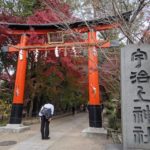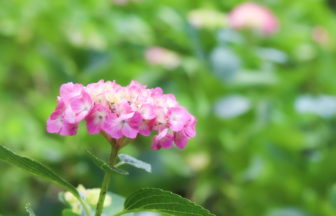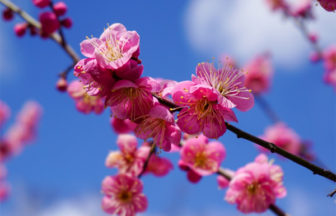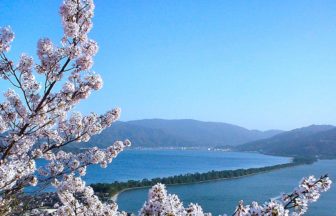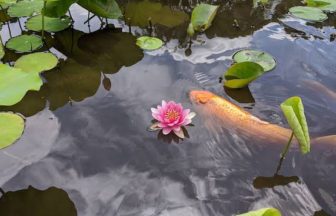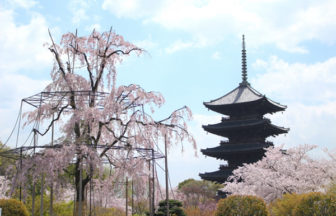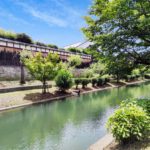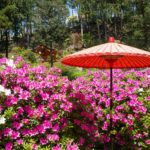Kyoto is old Japan writ large: atmospheric temples, sublime gardens, traditional teahouses and geisha scurrying to secret liaisons. This time, we’d like to share some information about what to know before you come to Kyoto.
Index:
What’s Kyoto like?
Destination and Temperature in Kyoto
National Holiday in Japan
What to wear in Kyoto
How’s the safety in Kyoto?
Hotels in Kyoto
Transportation in Kyoto
Smoking and Drinking in Kyoto
Payment System in Kyoto
Tourist information center
What’s Kyoto like?
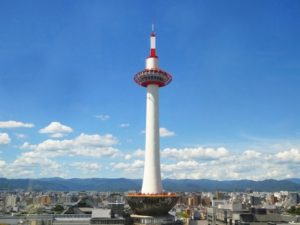
Having visited Kyoto many times, it still surprises and delights you. No matter how often you pad barefoot across tatami mats in a ryokan, sip matcha in centuries-old tearooms, cycle through Arashiyama bamboo forest or drink on the banks of the Kamo-gawa, it’s a city you could never tired of.
Kyoto is considered the cultural capital of Japan and a major tourist destination. It is home to numerous Buddhist temples, Shinto shrines, palaces, and gardens, many of which are listed collectively by UNESCO as a World Heritage Site. Prominent landmarks include the Kyoto Imperial Palace, Kiyomizu-dera, Kinkaku-ji, Ginkaku-ji, and the Fushimi Inari Taisha. In Kyoto, where the town itself brims with storied traditions of time past, there’s something new to discover, even in the old capital.
Destination and Temperature in Kyoto

Located in the Kansai region on the island of Honshu, Kyoto forms a part of the Keihanshin metropolitan area along with Osaka and Kobe. It’s convenient to get to Osaka. It takes about 30 minutes by train.
Kyoto has a humid subtropical climate, featuring a marked seasonal variation in temperature and precipitation. Summers are hot and humid, but winters are relatively cold with occasional snowfall. Kyoto’s rain season begins around the middle of June and lasts until the end of July, yielding to a hot and sunny latter half of the summer. Kyoto, along with most of the Pacific coast and central areas of Japan is prone to typhoons during September and October.
The sunshine hour in summer is from 5.a.m to 7.p.m. The best season to stroll Kyoto city as long as you can is from May to July because the climate is pretty good and the sunshine hour is long. In winter, the sunshine hour is from 7.a.m to 5.p.m. It is rare to snow in the city, so you need to be aware of information about road and transportation.
There is no time difference in Japan.
【Average maximum/ minimum tempature】
January:9C/1C 48F/34F
February:10C/1C 50F/39F
March:13C/4C 55F/39F
April:20C/9C 68F/48F
May:25C/14C 77F/57F
June:28C/20C 82F/68F
July:32C/23C 88F/82F
August:33C/24C 91F/75F
September:29C/20C 84F/68F
October:23C14C 82F/57F
November:17C/8C 63F/46F
December:12C/3C 54F/37F
(C=Celsius, F=Fahrenheit)
National Holiday in Japan
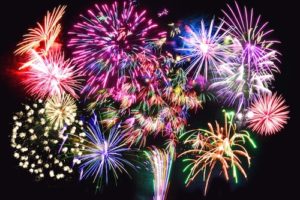
Japan has sixteen public holidays each year. Some holidays combine with the weekends, creating consecutive holidays. On the national holiday, government institutions, post offices, and banks are close. Restaurants and shops are usually open except a New Year’s Day. Public transportation is running according to schedule on a holiday.
January 1st: New Year’s Day
The second Monday in January: Coming of age Day
February 11th: National Foundation Day
February 23rd: Emperor’s Holiday
March 20th or 21st: Spring Equinox Day
April 29th: Showa Day
May 3rd: Constitution Memorial Day
May 4th: Greenery Day
May 5th: Children’s Day
The third Monday in July: Marine Day
August 11th: Mountain Day
The third Monday in September: Respect for Senior-Citizens Day
Around September 23rd: Autumn Equinox Day
The second Monday in October: Health-Sports Day
November 23rd: Labor Thanksgiving Day
What to wear in Kyoto

Casual clothes are fine and there is no specific dress code for entire temples or shrines but you’ll be taking your shoes off most of the time. If you don’t like the idea of slipping your feet into sweaty sharped slippers, be sure to carry a pair of socks with you if you’re wearing sandals during the summer months.
The rainy season in Kyoto is from mid-June to early July. It doesn’t rain every day during the season, but we experience various kinds of rain such as sprinkles, heavy rain and sometimes rainstorm. Even though some of the traditional wooden temples and gardens look much more amazing in the rain, it’s good for you to wear waterproof outfits.
Those who wear kimono are seen in Kyoto and you can get a discount when you enter the designate places.
A lot of Japanese people wear a mask in winter and spring. It is not only for the patients but people who want to prevent the flu or cold. So not all people wearing a mask are sick. Also, many people in spring wear a mask to prevent hayfever. You might be stared at if you have a cough and running nose without a mask.
How’s safety in Kyoto?
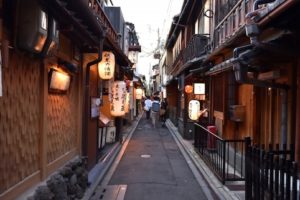
Safety in Japan is ranked in 6th in the world according to Global-Peace-Index2018. Many people believe Japan is safety country. However, the number of crimes is over 900,000 in 2017 and the most one is theft. Japanese tend to put their belongings on the seat in a cafe or a restaurant, but it’s so dangerous.
Kyoto doesn’t have any particular dangerous area for tourists. If you make sure to know what not to do during traveling, your trip would a great one.
-Do not walk or take on a bus alone at night.
-Be careful if an unknown person talks to you.
-Rock the key and chain in your hotel room.
-Refrain taking a nap in a public place
Hotels in Kyoto

Kyoto has a wide range of accommodations, with some of the best traditional Japanese inns. Five-star and banquet hotels are well represented, along with cheaper business hotels and hip hostels. The average accommodation fee is about JP 13,000 at one night. It costs a bit higher compared to Tokyo and Osaka. Another estimation; business hotels and hip hostels (10,000 yen or less), standard room(10,000~20,000 yen), superior room(20,000~30,000 yen), and deluxe room (30,000~50,000).
Transportation in Kyoto
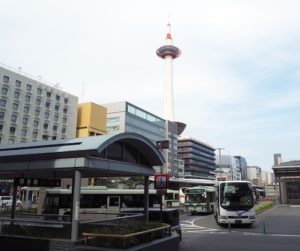
There are four ways to get to Kyoto; train, bus, taxi, and rental car. The express Haruka or Highway bus is convenient. It takes about one and a half hours and costs 3,000 yen (one way).
(Transportation in the city)
The popular way is both using buses and trains. There are various kinds of tickets and you can get it at a tourist information center or a ticket counter.
You can charter a taxi to visit some sightseeing spots and in that case, you need to keep in mind that it is easy to catch in a traffic jam in spring and fall.
Check the details:Kyoto city Bus and Subway tickets
Smoking and Drinking in Kyoto
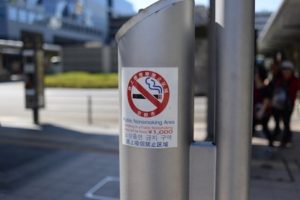
Even if the fire of the cigarette is cross with a person’s body and clothes around, and a smoker will be however careful of children’s face around here for a hand with a cigarette later, the smoking on the road is very dangerous.
Therefore Ordinance about prohibited where it’s for smoking on the Kyoto city road is established and provides everyone stops damage to everyone’s body and goods of a citizen by smoking on the road, a tourist and a commute person to the city as well as suppresses influence to health in Kyoto-shi, and that can secure a healthy life by safety and security so that smoking on the road isn’t done at an outdoor public place at the city whole field.
There is no law forbidding drinking beer on the streets, but there is no need for such a law since most people don’t drink on the streets. But it’s quite common to drink beer at a picnic on a big grassy park in Japan. You need to show your identification (not always) when you buy alcohol.
Payment System in Kyoto
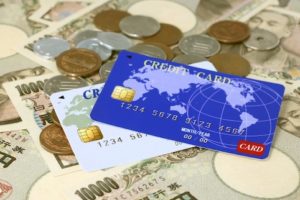
Japan has a reputation for being a cash-based society. Even though trends have gradually been changing and there has been a significant increase in the acceptance of other payment methods, cash is still the most common payment method. Admission fee, bus fare, some taxi, and small stores basically want cash.
There is a 10% consumption tax on retail purchases in Japan.
Tipping is not required in Japan. If you give some cash to the staff, they may be confused. In some Izakaya restaurant, the dish like a small appetizer is a part of the service charge. It is a curious system and you can’t refuse.
Kyoto Tourist Information Center
Kyoto tourist information center offers information about sightseeing in all over Kyoto in some languages. Japanese, English, Chinese, and Korean. You can purchase a transport ticket or an event ticket there. Staff help you reserve or cancel your hotel reservation.
-Place:
Kyoto Station Building 2F
-Tell:
075-343-0548
-Website:
Kyoto official travel website
-Business Hours:
8:30~19:00
Do you need more information?
You should receive such local information of Kyoto by an application “KoI APP”.
With this application, even if you don’t have Wi-Fi, you can find nearby stores and so on.
You can install the application from the following URL.



